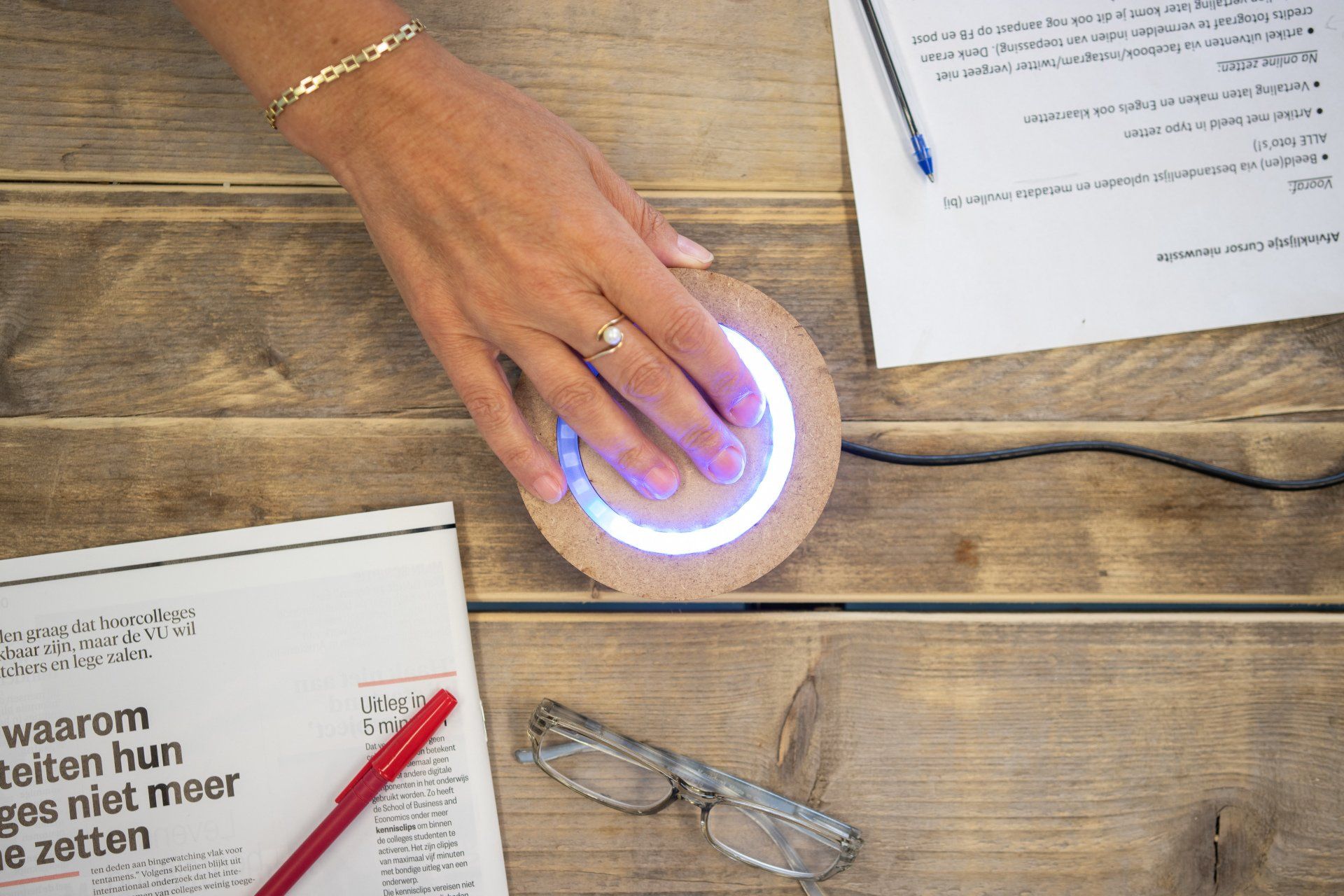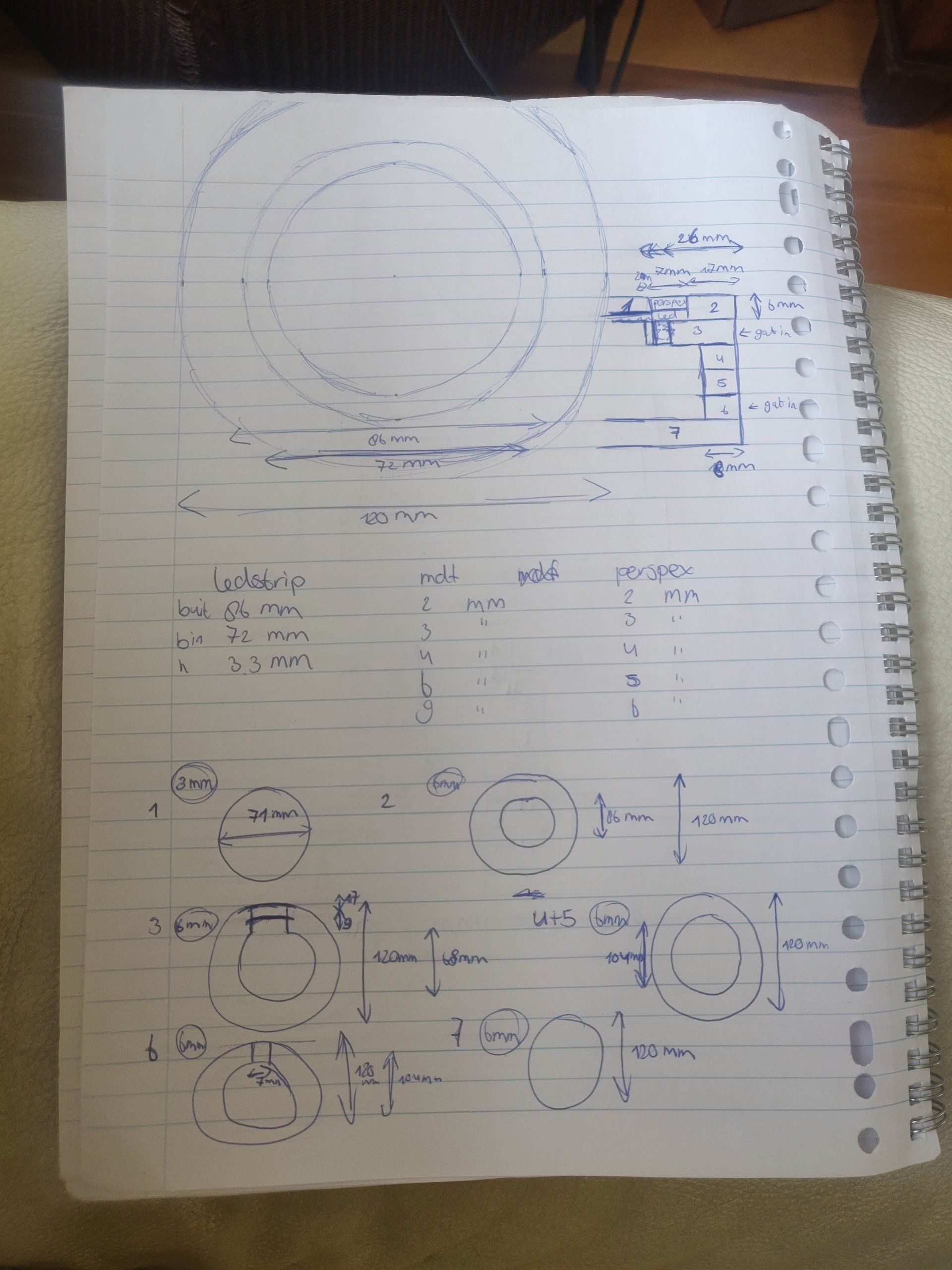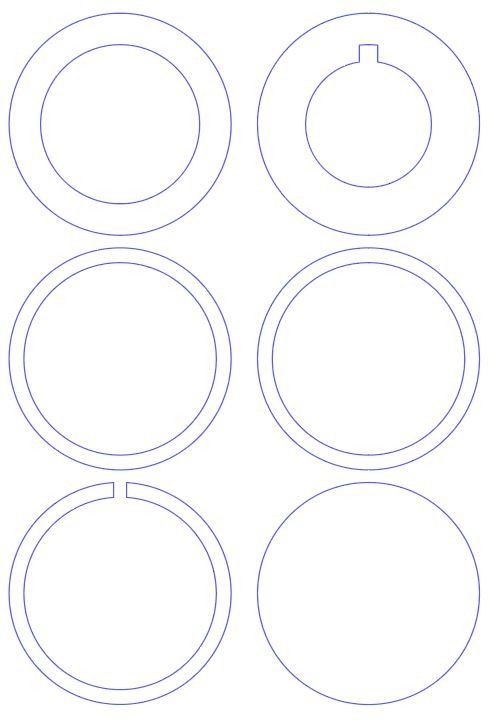Flemp
Research Project B2.2 - Flemp
User and Society, Math, Data and Computing, Technology and Realization, Professional skills
As most people have probably experienced, meetings can sometimes be quite slow and inefficient. Could design help to solve this problem? During my B2.2 design research project in the Seamless Interaction Design for Professionals squad, my group and I researched the ‘Influence of an Adaptive Ambient Display on Meeting Progression’.
Within this scope, the research question of “How does an adaptive lighting display based on meeting context influence the experience of progression during the meeting?” was formulated. To answer this question, we designed a small puck containing an LED-ring and a button in the middle. If not already there, participants were requested to add a total meeting duration, the amount of subjects, and the relative length of each subject (short, middle, long) to their agenda. This way, a rough duration per subject could be calculated. During the meeting, the LED-ring would fill up according to the duration of the subject. When a subject was finished, the button could be pressed to move to the next subject. When finishing a subject early, the remaining time would be added to the remaining subjects, relative to their length. When finishing late, the time would be subtracted in the same way. To analyze the impact of this device, baseline observations of meetings were also conducted without the device present.
The results from the research were very promising. Meeting became much shorter, because they were more focused and therefore less subjective to unnecessary deviations. The design was found not to be intrusive, but nevertheless caused that meeting participants tried to finish before the ‘time was up’. The design also resulted in a social improvement, where participants felt more confident to tell others to speed up by referring to the remaining time.
In this project, I learned a lot about conducting research by following a mixed methods approach. This was a nice addition to my learning in the Design <> Research course, where I focused on the quantitative approach. By being responsible for conducting the observations and interviews, I learned how to objectively document my findings and be non-suggestive in my interviews. Next to the quantitative analysis skills I already had, I learned how large amounts of qualitative data can be analyzed for valuable findings by using tagging, filtering and clustering. In this respect, I also learned about the importance of context, meaning that certain statements can become meaningless or wrongly interpreted without it.
I also improved my physical making skills by creatively using a laser cutting to create a 3D shape. By using multiple layers, I was able to create dedicated spaces and cutouts for the electronics and wiring. Next to the physical making, I significantly improved my coding skills, being able to make the device automatically adapt its behavior based on the given meeting context/data.
Flemp




